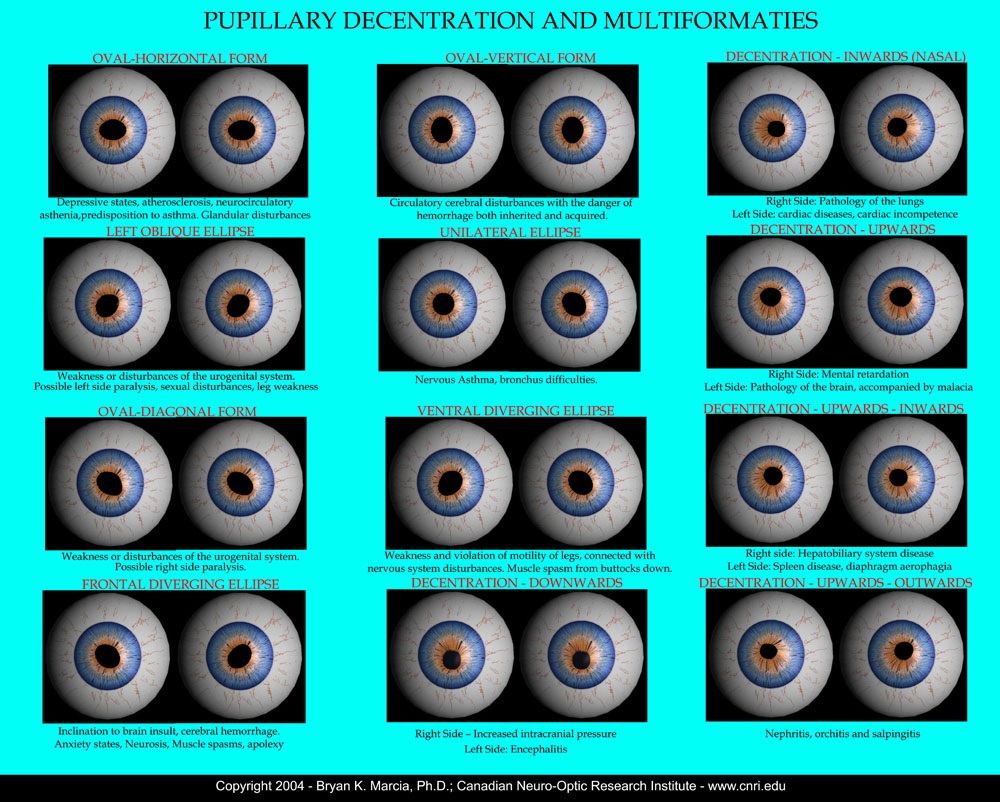Under normal conditions, the pupils are either centered in the iris or slightly shifted inward and downward. This positioning results from the balanced interaction between the sympathetic and parasympathetic components of the pupil-motor system.
A partial weakening or loss of adrenergic mechanisms disrupts this balance between the sphincter and dilator muscles, leading to a shift in the pupil’s position. Despite this shift, the pupil’s circular shape and collarette typically remain unchanged.
Decentration becomes clinically significant if the pupil’s center deviates from the iris center by more than 3%.

